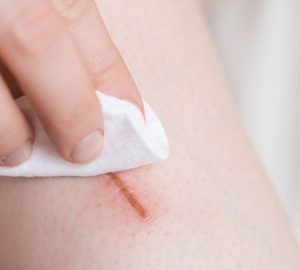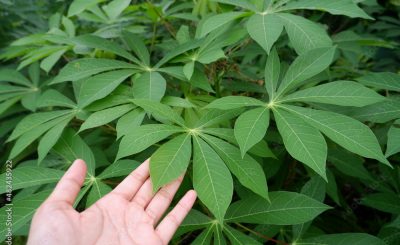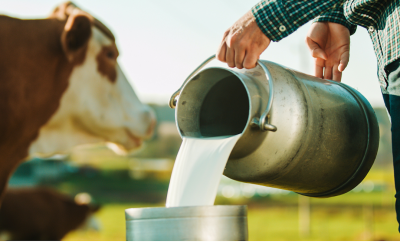Views: 9
How Is Honey Use On Wounds

For thousands of years, people have used honey to help heal wounds. Today, there are many other effective treatments, but honey might still be useful for certain types of wounds.
Honey’s antibacterial properties and special pH level can help bring oxygen and healing compounds to a wound.
However, before using honey from your kitchen, it’s important to know that wound-care experts use medical-grade honey to treat chronic wounds and other injuries.
Keep reading to learn when honey is and isn’t a good choice for wound healing.
Is Honey Effective For Healing?
Honey is a thick, sweet substance that contains bioactive ingredients that can aid in wound healing.
There are several benefits of using honey for healing purposes, they includes but are not limited to:
- Promotes healing through acidity: Honey has a pH level between 3.2 and 4.5, which is acidic. When applied to wounds, this acidity helps the blood release oxygen, an important factor in healing. It also lowers the amount of proteases, substances that can slow down the healing process.
- Draws out fluid through sugar: The natural sugars in honey pull water out of damaged tissues, which reduces swelling and helps lymph fluid flow to the wound, aiding in healing. The sugars also remove water from bacterial cells, which can prevent them from growing.
Honey has been shown to fight bacteria that are often found in wounds, like MRSA (methicillin-resistant Staphylococcus aureus) and VRE (vancomycin-resistant Enterococci). This antibacterial effect may be partly due to honey’s ability to draw out moisture.
Honey can be used to treat:
– Boils
– Burns
– Wounds and ulcers that won’t heal
– Pilonidal sinus
– Venous and diabetic foot ulcers
How to Use Honey for Wounds
If you have a wound or burn that isn’t healing, it’s important to talk to a doctor before trying honey as a treatment. Ask if honey could be a good option for you.
For serious wounds, it’s best to have a doctor or wound-care nurse show you how to apply the honey the first time. The amount of sugar and how the dressing is applied can affect how well the wound heals.
Tips For Applying Honey On Wounds

If you’re using honey on wounds at home, here are some general tips to follow.
Before you start, make sure your hands and tools, like gauze and cotton tips, are clean.
- Apply honey to the dressing: Instead of putting honey directly on the skin, apply it to a dressing first, then place the dressing on the wound. This helps keep things less messy. You can also buy honey-infused dressings, like those from the MediHoney brand. However, if you have a deep wound, like an abscess, you should fill the wound with honey before covering it with a dressing.
- Cover with a clean, dry dressing: Use sterile gauze pads or an adhesive bandage to cover the honey. An occlusive dressing is ideal since it prevents the honey from leaking out.
- Change the dressing when needed: Replace the dressing once it becomes soaked with fluid from the wound. As the wound heals, you may need to change the dressing less often.
- Wash your hands after dressing the wound: Make sure to wash your hands thoroughly after you finish.
If you’re unsure about how to apply honey to your wound, check with a doctor.
Types of Honey for Wound Care
It’s best to use medical-grade honey, which is sterilized and less likely to cause allergic reactions. Manuka honey is well-known, but other types like Gelam, Tualang, and MediHoney (a brand of sterilized honey) are also used for healing wounds.
How Honey Helps Heal Wounds
Honey is a powerful natural remedy for wounds. Research from Louay Labban at Al Rasheed Private University shows that honey’s ability to fight bacteria comes from its high sugar content, low acidity, and the presence of hydrogen peroxide, among other helpful substances. Simply put, honey works as an antimicrobial that aids in wound healing.
Applying honey as a wound dressing can speed up recovery, especially for minor burns and surface wounds.
Here’s how it works:
Honey prevents bacteria from growing on the wound. It keeps the area moist, which helps reduce scarring, and forms a protective layer between the wound and the dressing.
While any pure raw honey can be used on wounds, Manuka honey is considered the best choice.
- Manuka Honey in Wound Care
Manuka honey is much more effective at fighting infections than regular honey. It’s been successfully used to treat various conditions like infected and non-infected wounds, burns, surgical cuts, leg ulcers, pressure sores, traumatic injuries, meningococcal lesions, side effects from radiotherapy, and gum inflammation.
The special healing power of Manuka honey comes from a natural compound called methylglyoxal (MGO). The higher the MGO level in the honey, the stronger its ability to fight microbes. For medical purposes, Manuka honey should have an MGO level of at least 500+, with 900+ being ideal for treating wounds and oral issues.
Interesting fact: When people refer to “medical honey,” they’re actually talking about Manuka honey with high MGO levels.
Choosing the Right Manuka Honey for Wound Care
When using Manuka honey to treat wounds, it’s important to select the honey with the highest antibacterial and antioxidant properties, which means choosing the one with the highest MGO content. To find the most effective Manuka honey for healing, you can consult our Australian Manuka Honey Strength Guide.
Here’s a quick look at some options:
– Manuka Honey – MGO 30+ (500g): Starting at $7.00
– Manuka Honey – MGO 100+: Starting at $12.00
– Manuka Honey – MGO 500+: Starting at $36.00
– Manuka Honey- MGO 900+: Starting at $69.00
Honey for Diabetic Wounds
For people with diabetes, slow-healing wounds can be a major concern. A simple cut can develop into a painful ulcer that resists treatment, leading to serious complications. Manuka honey, with its strong healing properties, can be a valuable aid in managing these stubborn wounds.
How Diabetes Affects Wound Healing
If you have diabetes, you may have noticed that your wounds take longer to heal compared to others. This is due to the harm high blood sugar can cause to your body.
Diabetes occurs when the body can’t produce or properly use insulin, which is needed to turn glucose (sugar) into energy. When glucose isn’t processed correctly, it leads to high blood sugar levels, which can damage nerves and blood vessels, slowing down the healing process.
For people with diabetes, nerve and blood vessel damage often means that wounds go unnoticed at first, leading to delayed treatment. Damaged nerves can make it harder to feel the pain of a cut, and poor circulation slows down the healing process.
The Impact of Diabetes on Wound Healing
High blood sugar, or hyperglycemia, is a key reason why wounds heal slowly or not at all in people with diabetes.
Diabetes affects wound healing in a few ways:
– Disrupted Healing Signals: High blood sugar interferes with the body’s normal healing process, causing abnormal changes in cells and preventing the immune system from working properly to heal wounds.
– Nerve Damage: Diabetes can lead to peripheral neuropathy, where damaged nerves reduce skin sensitivity. This makes it easy for wounds, especially on the feet, to go unnoticed.
How Poor Circulation Affects Diabetic Wounds
People with diabetes often face a condition called peripheral vascular disease, which affects blood circulation. Because their blood is thicker and their veins are narrower, diabetics may experience poor circulation. This makes it harder for the body to deliver the necessary nutrients and oxygen to wounds, slowing down the repair and regrowth of cells.
Traditional treatments for diabetic wounds include managing blood sugar levels through diet and medication, relieving pressure around the wound, and removing dead tissue through wound debridement.
For more detailed information on how honey can aid in healing diabetic wounds, check out this article.
Using Honey to Heal Wounds
Honey offers a range of health benefits, from healing minor wounds to soothing sore throats. It’s a versatile remedy that can be used to treat various ailments effectively.
What Are the Risks of Using Honey on Wounds?
Using honey on wounds isn’t without risks. It’s possible that the nectar or its container could become contaminated, or someone might have an allergic reaction, sometimes due to bee pollen in the honey.
- Allergic Reactions
Signs of an allergic reaction to honey may include:
– Dizziness
– Severe swelling
– Nausea
– Stinging or burning after applying honey
– Difficulty breathing
– Vomiting
If you notice any of these symptoms, wash the honey off your skin and get medical help. Don’t use honey again until you’ve consulted with a doctor.
- Risks of Using Raw Honey
Some researchers have raised concerns about using raw honey, which is unfiltered and made directly from honeycombs, for wound treatment. They suggest that raw honey may carry a higher risk of infection.
Though this is more of a theory than a proven fact, it’s important to be aware of the potential risks, as noted by the journal Wilderness & Environmental Medicine.
- May Not Be Effective
There’s also a chance that nectar might not help heal your wound. To see any benefits, you need to apply it regularly, which could take a week or longer. If you don’t notice any improvement, consult a doctor or nurse.
Conclusion
Medical-grade honey has been shown to help with chronic and non-healing wounds. It has antibacterial, anti-inflammatory, and even anti-odor properties that can benefit people with persistent wounds.
However, it’s crucial to check with your doctor before using medical honey to make sure it’s safe for your wound.
By kingkentus








You must be logged in to post a comment.